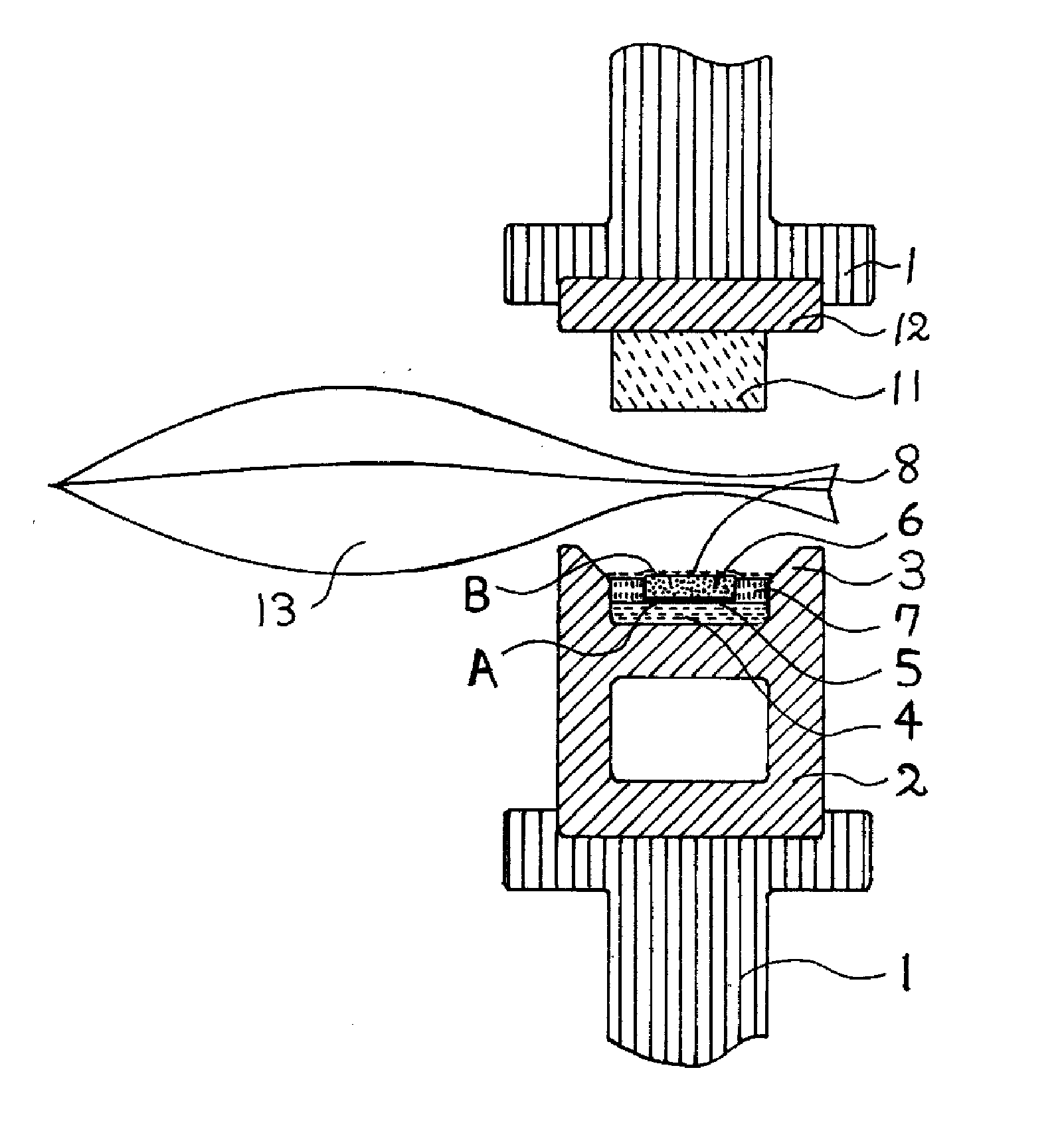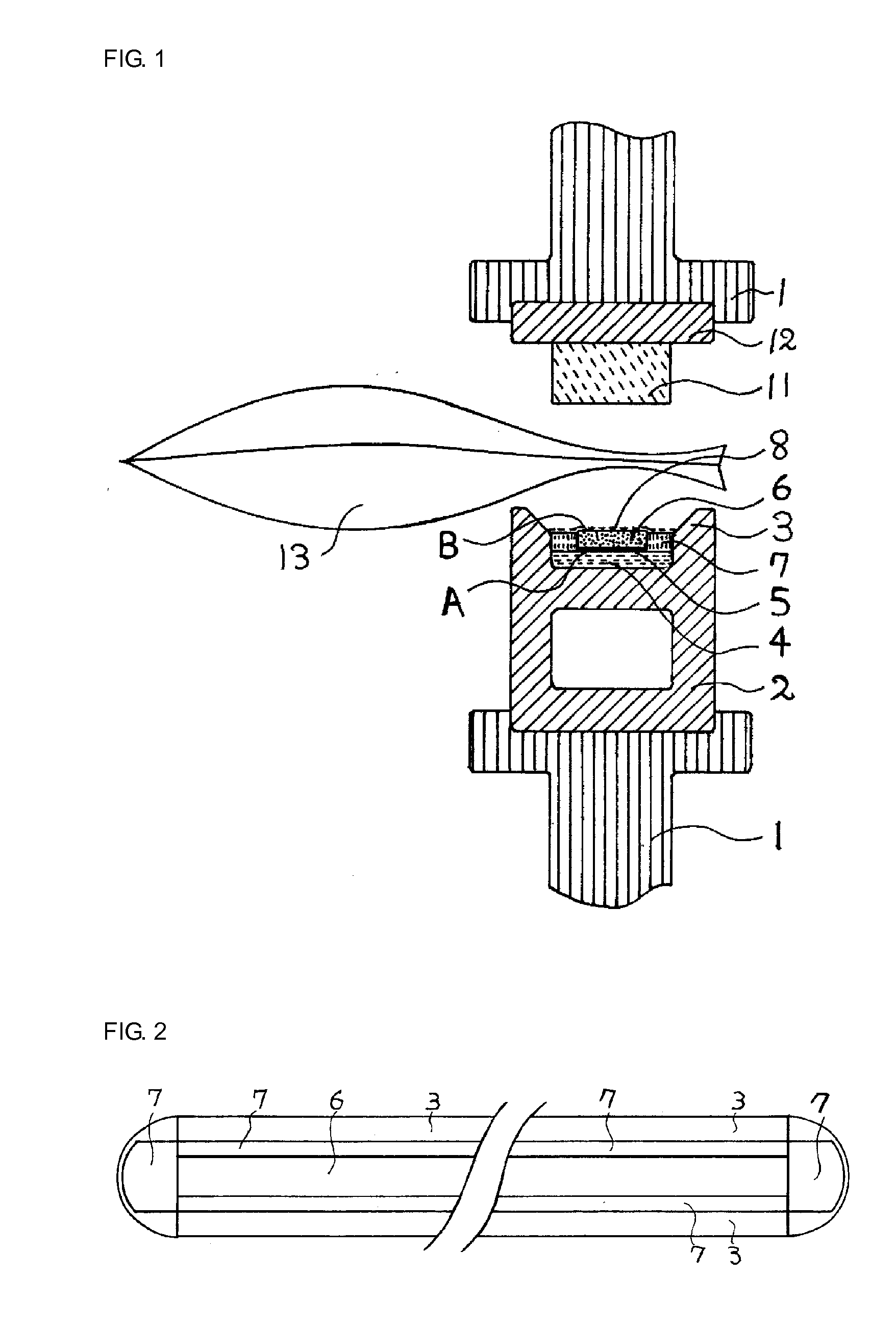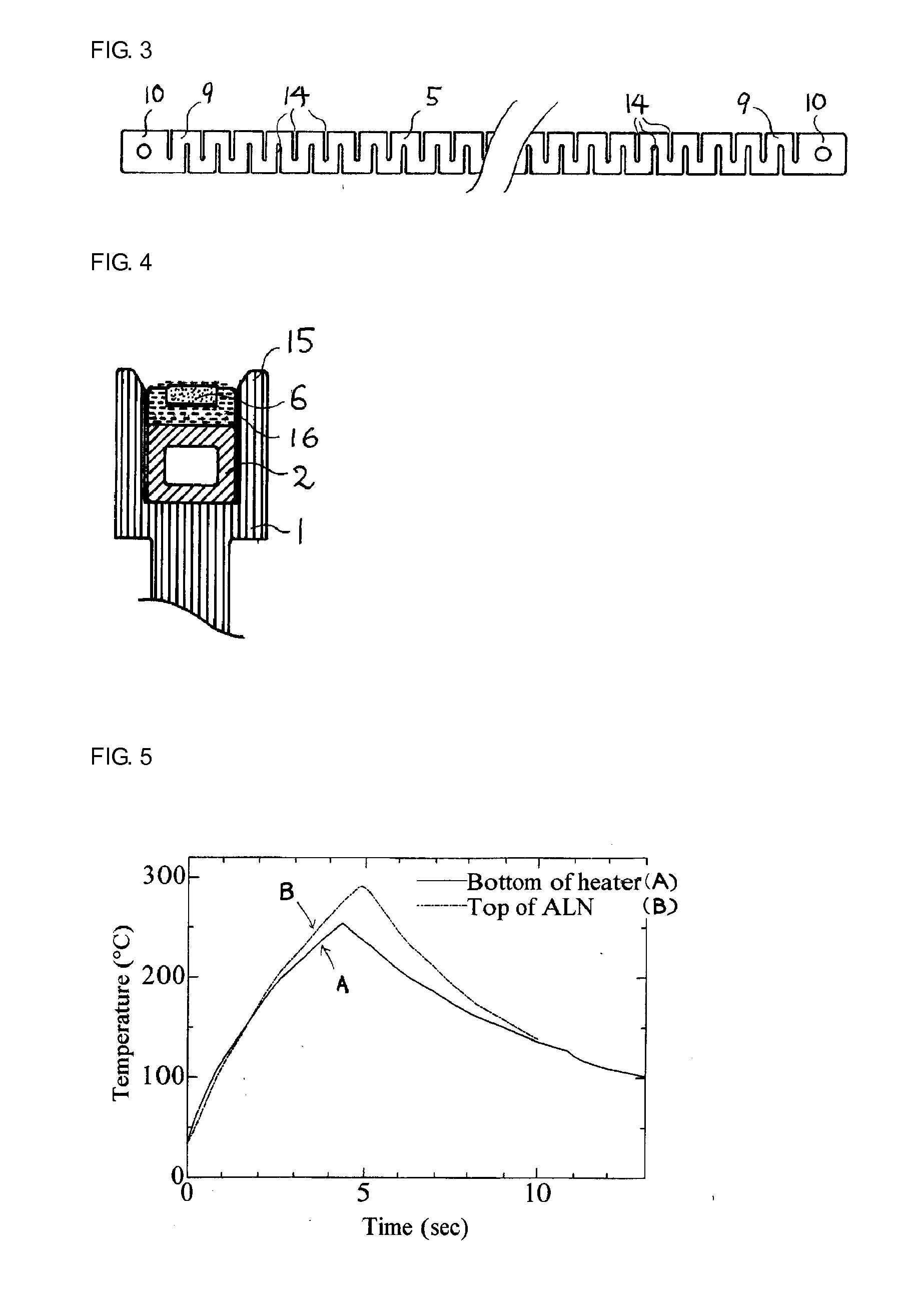Impulse sealer including ceramic-covered heater
a technology of impulsive heat sealing and ceramics, which is applied in the direction of packaging foodstuffs, packaged goods, other domestic articles, etc., can solve the problems of thermal weakness of film, user's hand touching the heater wire and receiving electric shock, and electric shock may occur
- Summary
- Abstract
- Description
- Claims
- Application Information
AI Technical Summary
Benefits of technology
Problems solved by technology
Method used
Image
Examples
first embodiment
[0031]FIG. 1 is sectional view illustrating an example of a heater and a press mechanism in which the heater is mounted according to the first embodiment. A heat dissipating base 2, which is an extruded aluminium pipe having a rectangular cross section, is fixed to one of jaws 1 (partially illustrated in FIG. 1) of the press mechanism. Ribs 3 having a height of 1.7 mm are formed at edges on both sides of the upper surface of the heat dissipating base 2. A piece of Sarcon tape 4 having a thickness of 0.45 mm is affixed to a part of the upper surface of the heat dissipating base 2 between the ribs 3. The piece of Sarcon tape 4 serves as a thermal-electrical insulator that insulates the heat dissipating base 2 from heat. (Sarcon tape, which is manufactured by Fuji Polymer Industries Corporation, is tape composed of a silicone rubber, a glass cloth, and aluminium nitride powder or alumina powder). A heater wire 5 having a zigzag shape is superposed on the piece of Sarcon tape 4. The hea...
second embodiment
[0049]As illustrated in FIG. 7, which is a sectional view, a heat die 18 made of aluminium nitride or aluminium is disposed on the thin aluminium nitride plate 6. The heat die 18 has a triangular cross section and, for example, has a height of 0.3 mm, a bottom surface having a width of 0.6 mm, and a length the same as that of the heater. A piece of fluoropolymer tape is applied to the heat die 18. Thus, temporary sealing and heat cutting can be performed. Because the heat die 18 is electrically insulated by the thin aluminium nitride plate, not only a ceramic but also a metal having a high heat conductivity can be used as the material of the heat die 18. One of the surfaces of the heat die 18 may have a three-dimensional shape suitable for the purpose of sealing. The heater can be used to seal an object that is too thick to be sealed by using existing sealers, such as a vinyl tube for blood transfusion. Moreover, for example, a date or the like can be stamped on an object while seal...
third embodiment
[0051]FIG. 9 is a sectional view of the heat dissipating base 2 illustrated in FIG. 1 and a heater disposed on the heat dissipating base 2. A flat plate 20 made of Invar (a nickel steel alloy) is disposed between the thin aluminium nitride plate 6 and the piece of fluoropolymer tape 8. The flat plate 20 has a thickness of 0.1 mm, a width of 2 mm, and a length the same as that of the thin aluminium nitride plate 6. The flat plate 20, the thin aluminium nitride plate 6, and the pieces of glass cloth tape 7 on both sides are fixed with an adhesive. The thermal expansion coefficient of Invar is substantially equal to zero at room temperature, but the thermal expansion coefficient is higher at a temperature of about 150° C. Therefore, if a silicone adhesive is appropriately used, the adhesive can follow the displacement between the flat plate 20 and the thin aluminium nitride plate 6. The thermal expansion coefficient of the flat plate 20 can be made the same as that of the thin aluminiu...
PUM
| Property | Measurement | Unit |
|---|---|---|
| width | aaaaa | aaaaa |
| length | aaaaa | aaaaa |
| current | aaaaa | aaaaa |
Abstract
Description
Claims
Application Information
 Login to View More
Login to View More - R&D
- Intellectual Property
- Life Sciences
- Materials
- Tech Scout
- Unparalleled Data Quality
- Higher Quality Content
- 60% Fewer Hallucinations
Browse by: Latest US Patents, China's latest patents, Technical Efficacy Thesaurus, Application Domain, Technology Topic, Popular Technical Reports.
© 2025 PatSnap. All rights reserved.Legal|Privacy policy|Modern Slavery Act Transparency Statement|Sitemap|About US| Contact US: help@patsnap.com



